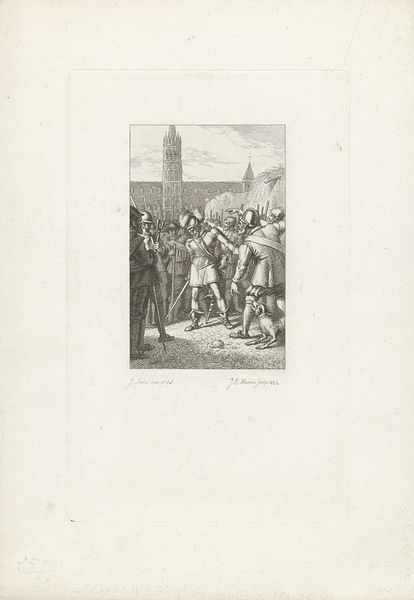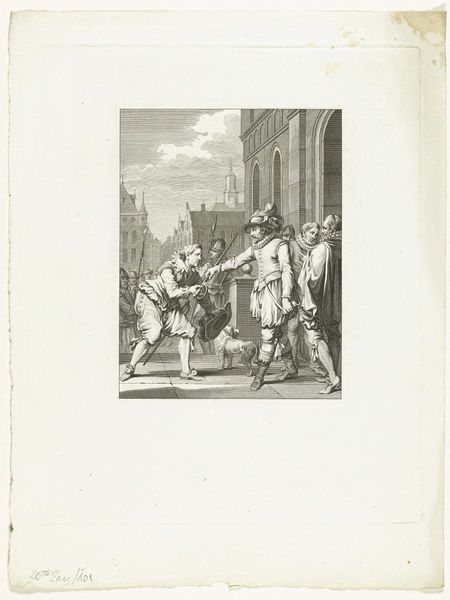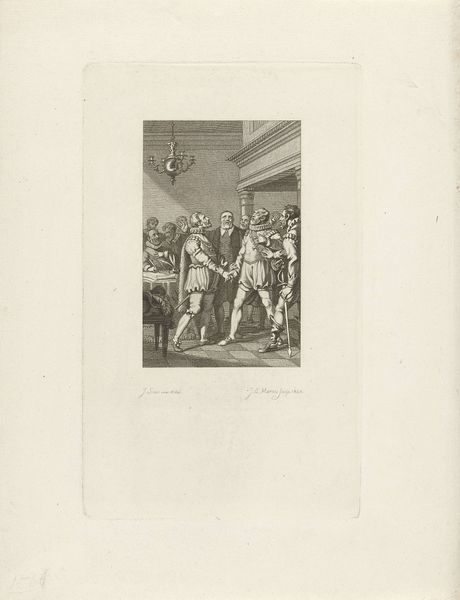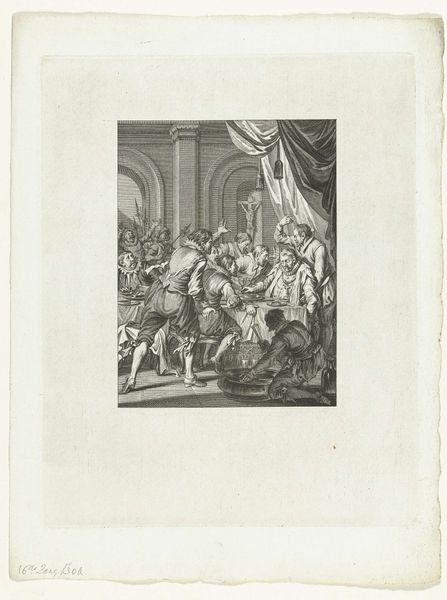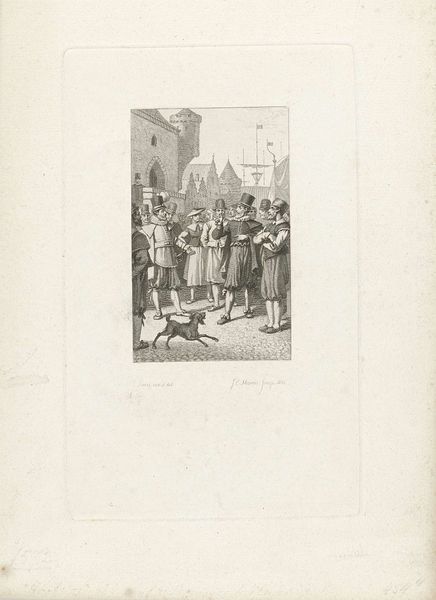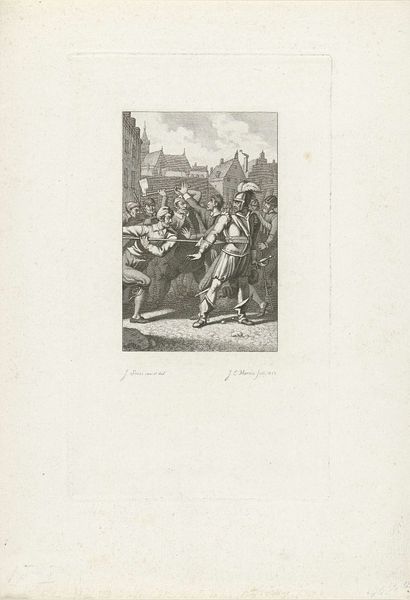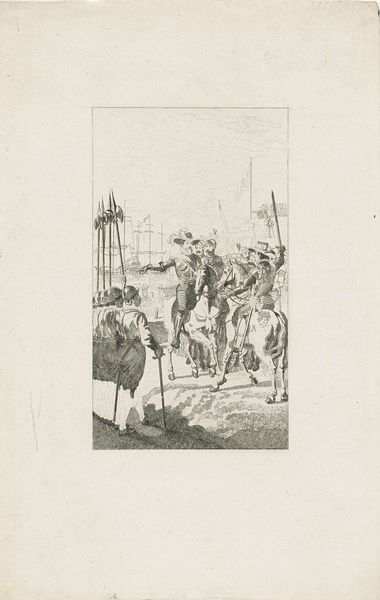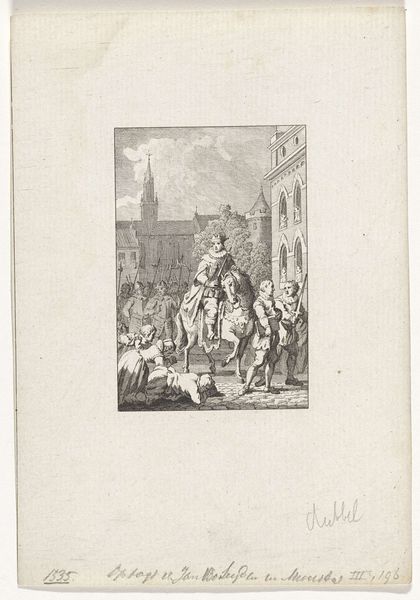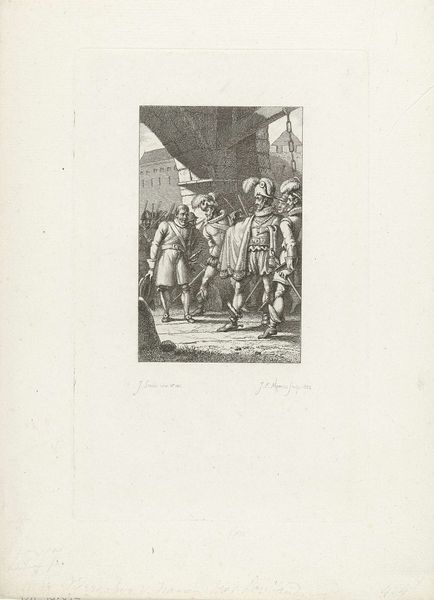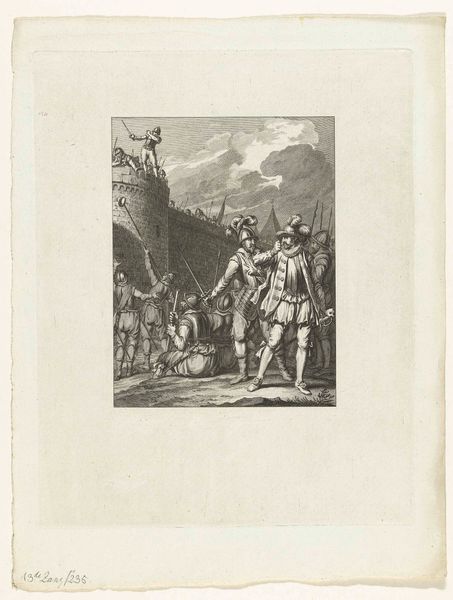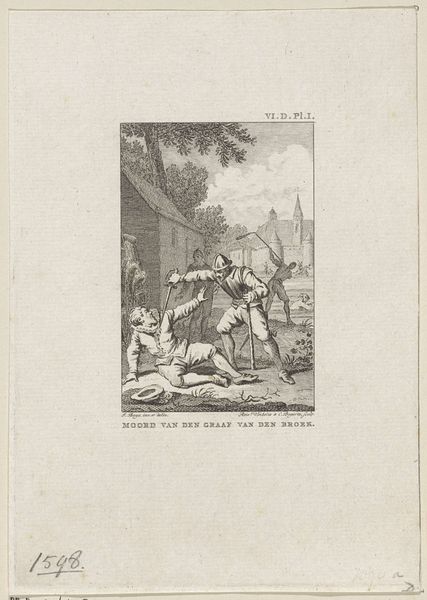
print, engraving
#
narrative-art
# print
#
old engraving style
#
figuration
#
line
#
history-painting
#
engraving
#
realism
Dimensions: height mm, width mm
Copyright: Rijks Museum: Open Domain
Curator: Here we have Jacob Ernst Marcus’s 1823 engraving, “Hopman Splinter Helmich op het huis te Well, 1586,” a narrative print housed here at the Rijksmuseum. What strikes you about it? Editor: The immediate thing is its intricacy, and the weight of all that armor pressing down, creating a palpable sense of tension. You can almost feel the pressure on the central figure from the amassed crowd. Curator: It depicts a historical moment—Hopman Splinter Helmich at the House of Well during a fraught period. Marcus is not simply creating a picture but actively participating in shaping the national memory. Consider when this print was created. 1823 saw a rise in nationalism—illustrating pivotal moments in the Netherlands history. Editor: Exactly, and seeing it as an engraving emphasizes the laborious process of creating this historical record. Each line meticulously etched onto the plate speaks to the craft involved, the skilled labor dedicated to producing an image intended for mass consumption. Curator: It underscores the performance of leadership. Look at Helmich, standing defiant amidst his men, clearly displaying strength. The House of Well is a fortress in itself, acting as backdrop to further symbolize power, and political importance. Editor: But there’s a fascinating tension between the glorification of leadership and the depiction of the material conditions of warfare. The cannons balls piled at the lower left…they’re practically begging to be interpreted. It adds depth, illustrating the material realities that underpin historical narratives. Curator: Indeed. What this engraving achieves, through its sharp lines and meticulous detail, is a connection. Marcus offers us a tangible link to a historical narrative. Editor: I see it less as simple representation, and more as a statement. Consider the relationship between the tools, labor, consumption, and the very construction of that narrative—the print being an active participation to history. Curator: A compelling thought to ponder. It's a valuable piece, made all the richer through that intersection of artistry, material process, and the socio-political context that birthed it. Editor: It prompts us to appreciate not only the visual story, but to examine how the image itself came into existence, how this very object informs our understanding of Dutch history and culture.
Comments
No comments
Be the first to comment and join the conversation on the ultimate creative platform.
